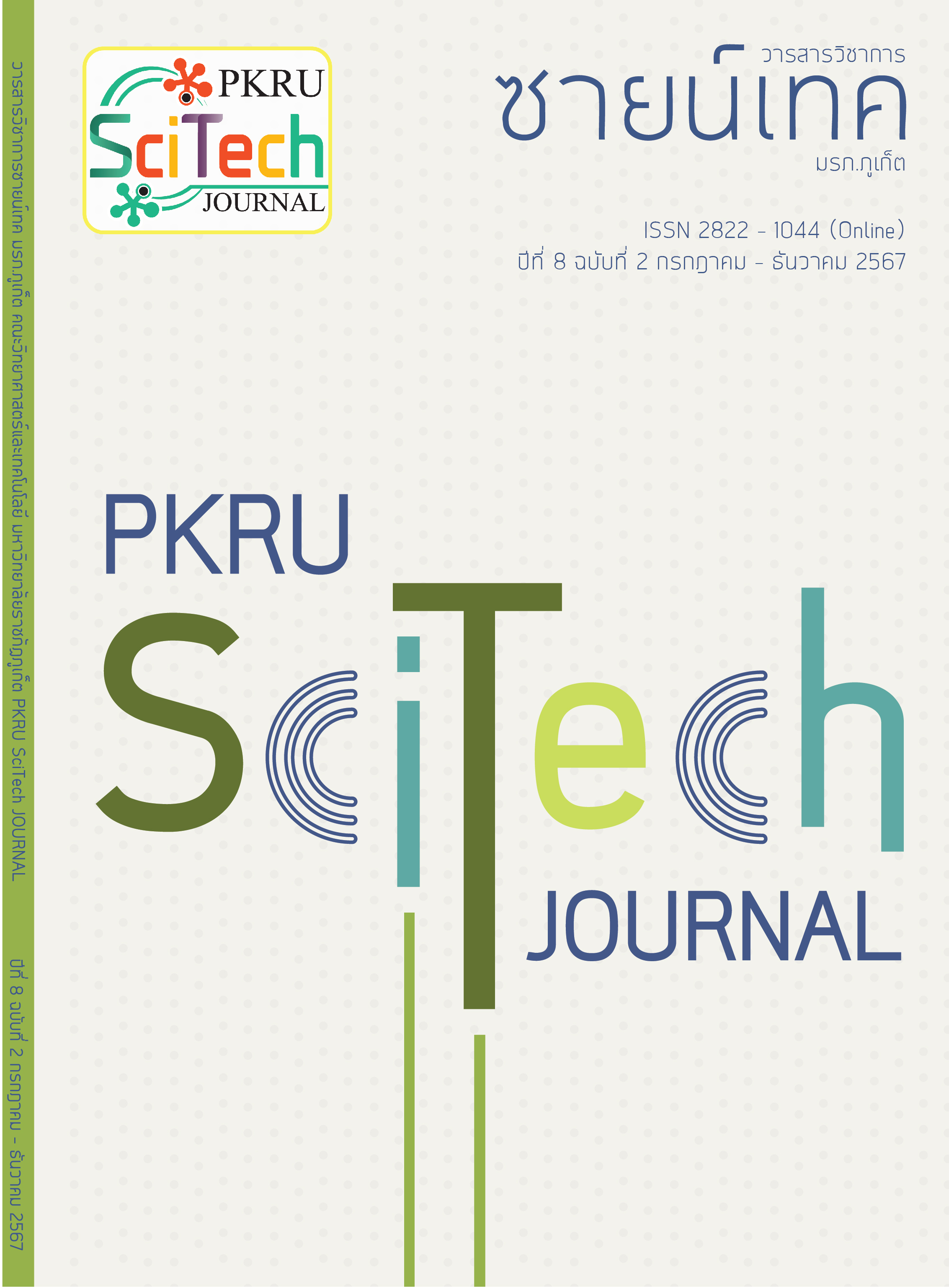The Development of a Coffee Bean Moisture and Temperature Measuring Device by Using Internet of Things
Main Article Content
Abstract
This research aimed to develop a device for measuring the moisture and temperature of coffee beans and to test its efficiency. We developed a prototype of the device along with an information system to display the measurement results. The device comprised a moisture sensor and a temperature sensor, which measured the values, transferred the data to a cloud server, and presented the findings through the information system. The differences in test results between the humidity sensor and the EE-KU machine, as well as between the temperature sensor and the digital thermometer (TP101), were not statistically significant at the 0.01 level. The device accurately measured the moisture and temperature of coffee beans and displayed the results on a mobile application installed on mobile devices, as well as a web application accessible to users. This application allows users to create additional user accounts and includes a database for gathering seller information. In terms of cost, the developed device is less expensive than commercially available devices, which cannot be used online and only display the results on the machine’s screen. Moreover, the developed device is smaller, lighter, and more portable than commercially available alternatives. Maintenance is also feasible, as the equipment can be easily sourced domestically at a low cost.
Article Details

This work is licensed under a Creative Commons Attribution-NonCommercial-NoDerivatives 4.0 International License.
- The original content that appears in this journal is the responsibility of the author excluding any typographical errors.
- The copyright of manuscripts that published in PKRU SciTech Journal is owned by PKRU SciTech Journal.
References
เยาวลักษณ์ จันทร์บาง. (2554). มอดเจาะผลกาแฟแมลงศัตรูในแปลงปลูกที่ส่งผลเสียระหว่างเก็บรักษา. ศูนย์นวัตกรรมเทคโนโลยีหลังการเก็บเกี่ยว, 10(4), 5–6.
ขนิษฐา จิตรลาง. (2566). พื้นฐาน Internet of Things (IoTs). [ออนไลน์], สืบค้นจาก https://library.wu.ac.th/km/พื้นฐาน-internet-of-things-iots-basic-internet-of-things-iots/ (1 เมษายน 2567).
Paul, R., Nazir, J. B., & Ahammad, A. (2023). Design and development of a smart agriculture (SA) system with machine learning-based IoT architecture (pp 377–381). In 2023 International Conference on Information and Communication Technology for Sustainable Development (ICICT4SD). Dhaka: Bangladesh.
ชนนิกานต์ รอดมรณ์, มธุรส ผ่านเมือง, และ วีระศักดิ์ จงเลขา. (2564). การประยุกต์ใช้เครือข่ายเซนเซอร์ไร้สายสำหรับฟาร์มอัจฉริยะ. วารสารวิจัย มหาวิทยาลัยเทคโนโลยีราชมงคงศรีวิชัย, 13(2), 315–329.
มินท์ธิตา แดงเรือ. (2566). เมล็ดกาแฟกับความชื้นตัวร้ายทำลายรสชาติ. [ออนไลน์], สืบค้นจาก https://www.scilution.co.th/coffee-bean-and-humidity-to-spoil-the-taste/#:~:text=โดยปกติแล้วเมล็ดแล้วควรมีค่าความชื้น (1 เมษายน 2567).
สำนักงานมาตรฐานสินค้าเกษตรและอาหารแห่งชาติ. (2561). มาตรฐานสินค้าเกษตร เรื่อง เมล็ดกาแฟอะราบิกา. กรุงเทพฯ: กระทรวงเกษตรและสหกรณ์.
Ghadban, S. I., & Atiya, A. F. (2019). Polynomial regression for time series prediction. Journal of Intelligent Learning Systems and Applications, 11(02), 9–24.
กนกศักดิ์ บุญทัน และประกาศิต ตันติอลงการ. (2558). เครื่องวัดค่าความชื้นข้าวเปลือกไร้สาย (หน้า 7–12). ใน การประชุมวิชาการครุศาสตร์อุตสาหกรรมระดับชาติ ครั้งที่ 8. คณะครุศาสตร์อุตสาหกรรม มหาวิทยาลัยเทคโนโลยีพระจอมเกล้าพระนครเหนือ.
วิจิตตรา คุ้มวงษ์, และ สรวง รุ่งประกายพรรณ. (2565). การพัฒนาชุดอุปกรณ์อินเตอร์เน็ตของสรรพสิ่งสำหรับติดตามอุณหภูมิและความชื้นของการเก็บรักษายา. The Thai Bulletin of Pharmaceutical Sciences, 17(2), 101–118.


